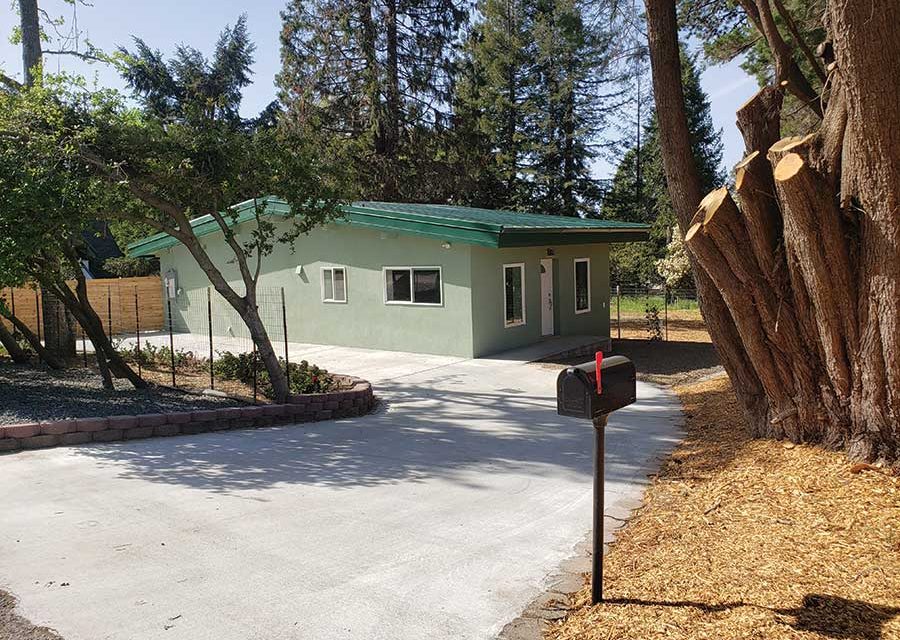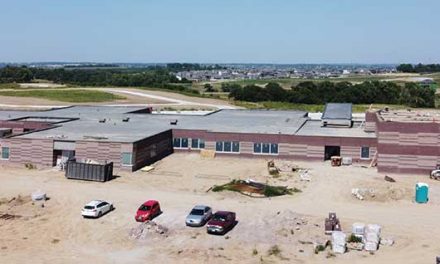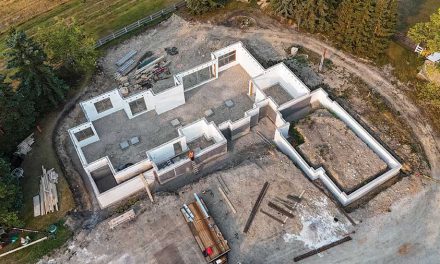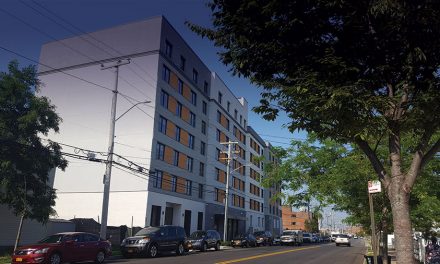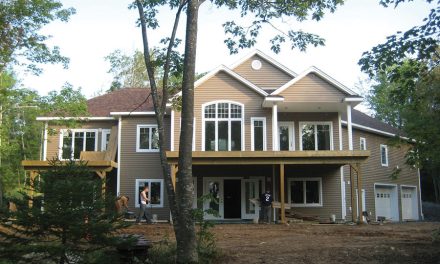By Levi Gurule
About 30 years ago, I met a man who loved to do concrete projects and had an idea that residential structures could be self-sufficient. He called it “net zero,” and 20 years later we formed a company, Net Zero By Design, to market the design for a net zero structure. The company was ahead of its time, and after a couple of years we dissolved the company as marketing had not resulted in any significant interest by the general public. Several years later, in 2017, the first of multiple fires raged through the local wild lands and swept right into densely populated areas in Sonoma County. Thousands of homes and many businesses were destroyed and the county has yet to completely recover as additional losses continued in the subsequent years. I had a long-game plan to develop my one-acre property that I started in 1990 when I purchased it. I wanted to add a guest house and expand the existing 1,500-square-foot wood-frame home. In the process, life happened, four kids raised, the ending of one marriage and starting of another. As a blended family now, I’m looking forward to meeting my 18th grandchild. The guest house idea (officially called an accessory dwelling unit, or ADU for short) had been on hold while other priorities took center stage, but in 2020, California changed zoning laws to allow building an ADU when a property can otherwise support the second unit.
Deciding on Technology
After considerable thought and design effort, the second unit began to take shape and the question of what technology it should include finally could be addressed. I looked at various packages:
- Manufactured home
- Wood-framed structure with enhancements
- ICF walls and wood-framed roof
- ICF walls and concrete roof
- Each type of construction was matched with various energy source packages:
- Grid utility electric and natural gas
- Propane heating and backup generator power
- Solar panels
- Geothermal heat source
Finally, the cost of each combination of construction and energy source were compared with the added variable of square footage of the building. Initially, the manufactured home option looked best for cost of purchasing and speed of construction, but 2020 brought Covid supply disruptions to the industry and available floor plans did not fit the available site space. Discarding the manufactured home concept left the conventional wood-framed structure as the next lowest cost option that could easily be adapted to any building footprint. However, with the continued threat of wildfires, including having had to evacuate once and being on alert to evacuate, added the need to fire-harden the structure. My extended family soon learned that the “three little pigs strategy” worked well as a way to deal with multiple hazards from wildfire by taking turns hosting evacuated families. While fires raged to the east and north of Santa Rosa and threatened to engulf the western side of Sonoma County, I quipped, “I’ve got the next earthquake covered, everyone is welcome!” with family in southern Sonoma County.
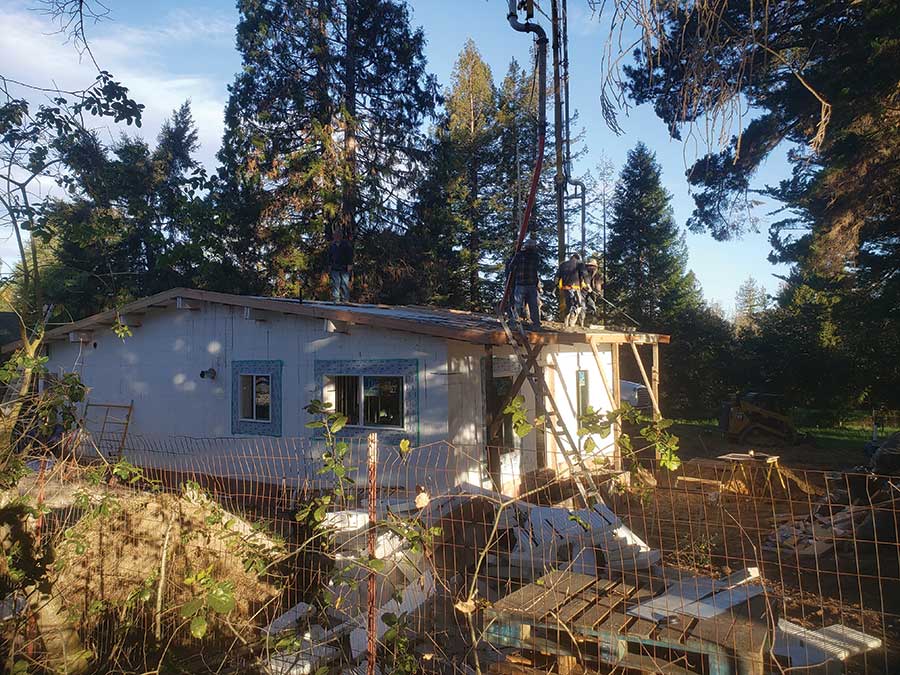
Because Levi has tall trees near the structure, he wanted the extra fire safety that comes with a concrete roof. The roof structure was constructed of steel beams clear spanning from exterior wall to exterior wall and composite steel pan decking attached. The 5-inch-thick concrete roof was then covered with 5 inches of hard mineral wool and a steel roof attached. The underside of the steel pan deck and the beams were left exposed to the living space
and coated with a slightly acoustical finish. Photos courtesy of Levi Gurule
The wildfire survivability of ICF construction was adopted as the way of protecting the new structure. The ICF construction included steel stud interior walls and a special stucco, U-Stucco, to protect the otherwise heat-vulnerable exterior insulating foam. The stucco covers all the exterior insulating foam including the soffits. Just including ICF walls in a wood structure tends to result in home structures surviving wildfires that consume the rest of the neighborhood, but my site has tall trees near the structure so I decided to try using a concrete roof. To save time and money, the roof structure was constructed of steel beams clear spanning from exterior wall to exterior wall and composite steel pan decking attached. The 5-inch-thick concrete roof was then covered with 5 inches of hard mineral wool and a steel roof attached. The underside of the steel pan deck and the beams were left exposed to the living space and coated with a slightly acoustical finish.
Energy Calculations
Energy calculations for the structure were estimated to be low enough to attempt to use a geothermal heat pump instead of natural gas to provide space heating and domestic hot water. A 24,000 BTU water to water heat pump that would supply domestic hot water and radiant floor space heating was selected as the most cost effective, even though initial equipment costs, including energy tax credits, were higher than natural gas heating equipment. Given the tiny heating capacity of the geothermal heat pump, two 30-gallon electric water heater tanks were installed to act as buffer tanks and backup heating should the geothermal system fail or not meet demand.
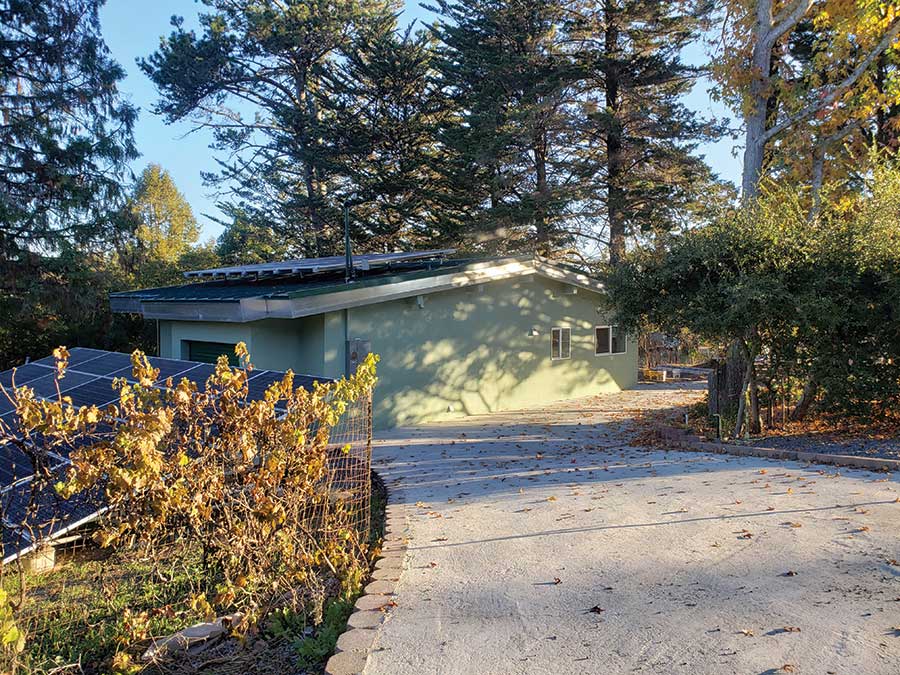
The southwest view of the ADU.
The ground loops for a geothermal system are often expensive and take up space that may not be available, so three 300-foot-long 1-inch diameter underground pipe loops were installed in excavations that were part of the construction for other aspects of the project. One loop was installed in the utility trench from the existing house. A second loop was installed under the house structure in the subgrade just below the R-10 insulation for the concrete floor of the house. The third loop was installed in the trenches for the septic system. It is anticipated that the additional moisture available in the septic field would enhance heat transfer between the soil and the loop piping.
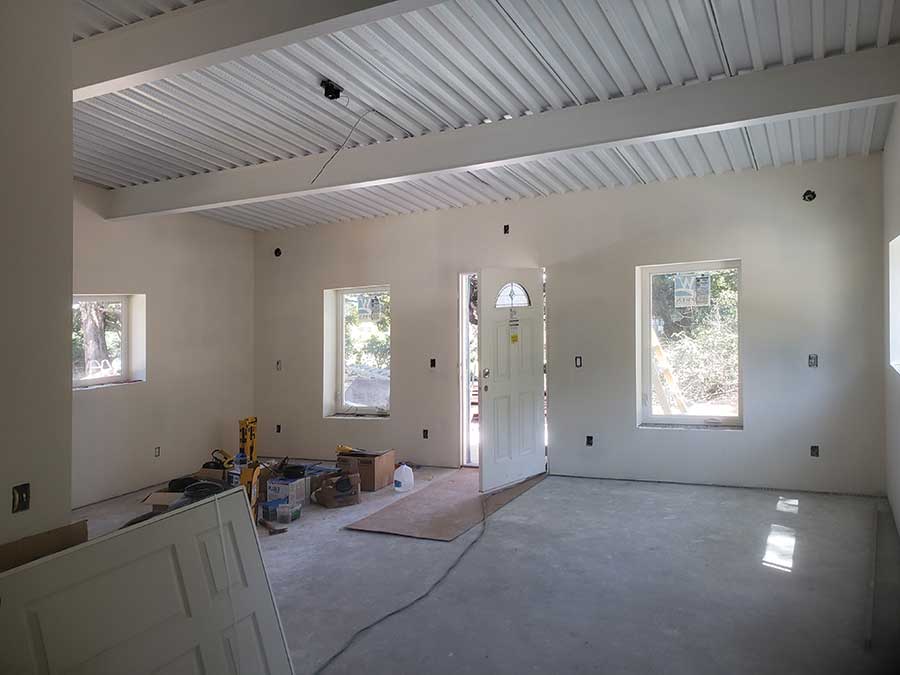
The view of the living area from the kitchen area.
All electric appliances were selected for the living space to minimize the need to vent air from a natural gas stove and clothes dryer. The remaining bathroom vent and range hood each exhaust 100 CFM. An all-in-one washer/dryer unit was selected both for its ability to fit under the bathroom counter and its use of a heat pump to avoid expelling heated air from the living space. Energy used by the all-in-one washer/dryer actually stays in the living space. Estimating that one pound of moisture has to be expelled per dryer load would roughly equate to 2500 BTUs. A typical clothes dryer would exhaust another 1500 BTUs (rough estimate as many variables affect heat loss or gain).
Keeping the Roof Heat Down
Anticipating that the metal-roofed structure might absorb a lot of heat in the summer, I added two pipe loops to the roof concrete. The pipe loops in the roof concrete were put in use the first night after the roof was poured as overnight temperatures fell to 15 degrees for the next three days. Well water was pumped into the pipe loops at a temperature of 51 degrees. The water exited the roof at a temperature of 48 degrees. Later during a summer heat wave with peak temperatures of 115 degrees I decided to test one of the pipe loops effect on the roof ceiling temperature. The roof ceiling temperature at the start of the test was 71 degrees. The water pumped into the pipe loop was 70 degrees by the time it flowed through 200 feet of garden hose in the 115-degree heat. The exiting water temperature was 72 degrees. The test was terminated due to the roof not showing a difference between the cooled half of the roof and the uncooled half of the roof. The highest recorded roof ceiling temperature for the rest of the heat wave was 72 degrees. Remarkably, the exposed steel ceiling and beams stayed within 2 degrees of the floor temperature, regardless of outside temperatures.
Living Space Temperature
An additional test was done to see how much heat was needed to warm the living space up to 72 degrees during cold weather with overnight lows in the 30s. Due to the thermal mass of the house (an estimated 250,000 pounds of concrete) the temperature rose slowly. Heating was done with a 1,500-watt electric heater placed in the living space and set for 72 degrees. The temperature of the house started at 50 degrees and began to warm up 1 to 2 degrees per day. Estimating that the heater BTU output was 5,100 BTU per hour (122,400 BTU per day) and the thermal equivalent water mass of the house was 75,000 pounds of water, it makes sense that about 1.5 degrees per day would be the best the heater could do. Once the house reached 72 degrees I put a watt meter on the heater and found that it was using about 30 kilowatt per day, or about 100,000 BTU per day. During the test I kept all the insulating window shades up to simulate an occupied living space. The geothermal heat pump should cut the heating power used to about 10 kilowatts per day to heat the house (COP of 3 assumed) during cold weather. The soil under the house is insulated by R-5 insulation around the perimeter of the foundation while still exposed to ground temperatures. Bringing the soil under the house into an equilibrium with the living space will reduce the amount of heat needed to maintain 72 degrees.
The house is equipped with a 4,680-watt solar panel array which should produce about 4,500 kilowatts per year. That works out to 375 kilowatts per month, which is the range of what a small house uses for power. The solar power is still under a net metering arrangement with the utility, but that arrangement is being phased out by the California PUC. To mitigate the phase-out of net metering, about 10 kilowatts of solar power storage batteries will be added to the system at a later date. Emergency power is provided by a 7.5-kilowatt generator powered by utility natural gas. The main house has an 11-kilowatt generator powered by an underground propane tank. So far, utility natural gas has been fairly reliable but in the event of an extended disruption of the utility natural gas, the generator can be switched to the on-site propane. Over the next year or two, the solar panel system for the main house and the ADU will be further improved to achieve utility grid independence with a power source priority placing solar first, solar batteries second, utility power third, and generator power fourth.
A Feeling of Safety
Earthquakes, summer power blackouts, winter storm power outages, wildfires, and the latest power interrupter, electric power shutdowns implemented by the utility during high winds, are happening with increasing frequency and increased lengths of utility power outages. I had to rewrite this paragraph due to a double failure of utility power and cable internet during a high-wind event. On top of power outages, evacuations have become an annual event for homes where trees and high winds coincide. In the face of this adversity, this accessory dwelling unit is built to be both green and to thwart the multiple hazards of northern California.
The long-term performance of the house will be further documented over the next two years to check each geothermal ground loop, actual power used and active/passive performance of the structure. Follow up articles will be available on my llbridges.com website starting in 2024.
Levi Gurule
Levi Gurule has been around Sonoma County for 33 years and likes its weather and the openness to new thinking. He is licensed as a civil engineer and enjoys public works projects and continually working on turning ideas into products. Gurule has worked for a number of public agencies and consulting companies including his own engineering construction business. Contact him at greendreamcomestoLife@outlook.com and visit his website llbridges.com.

